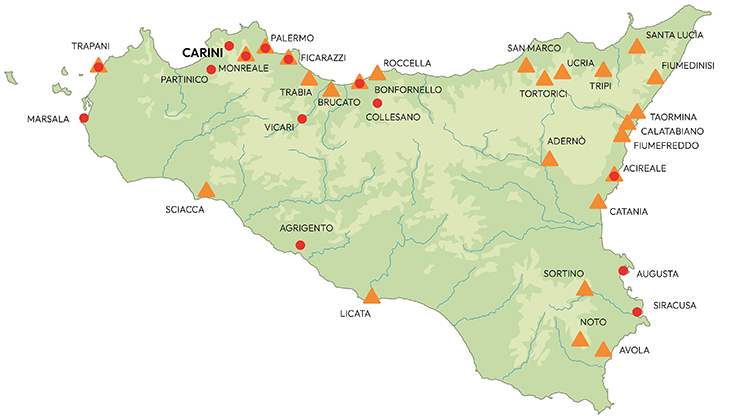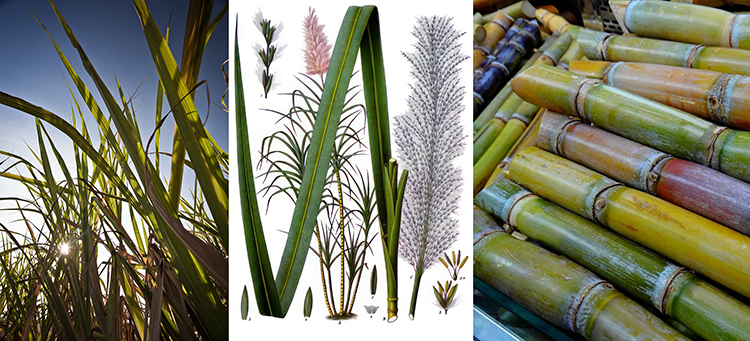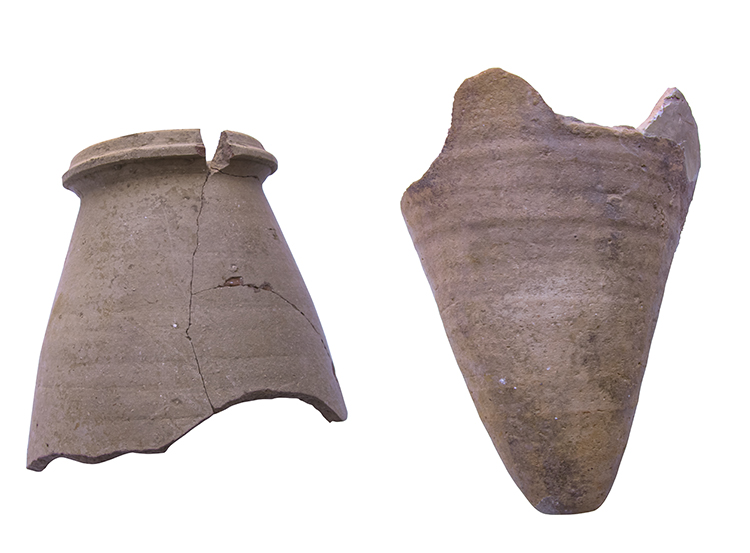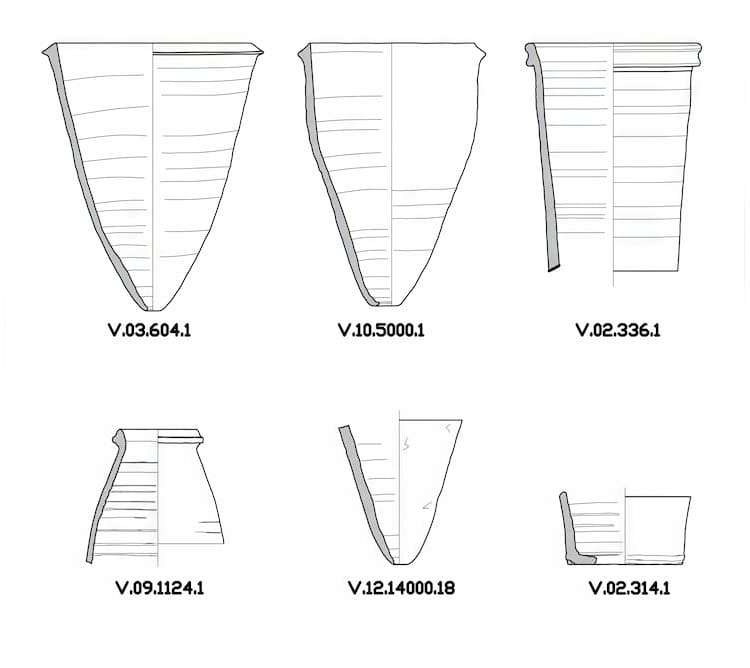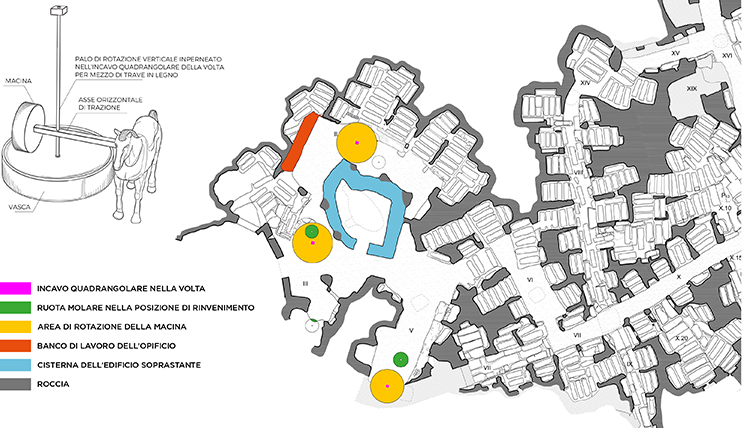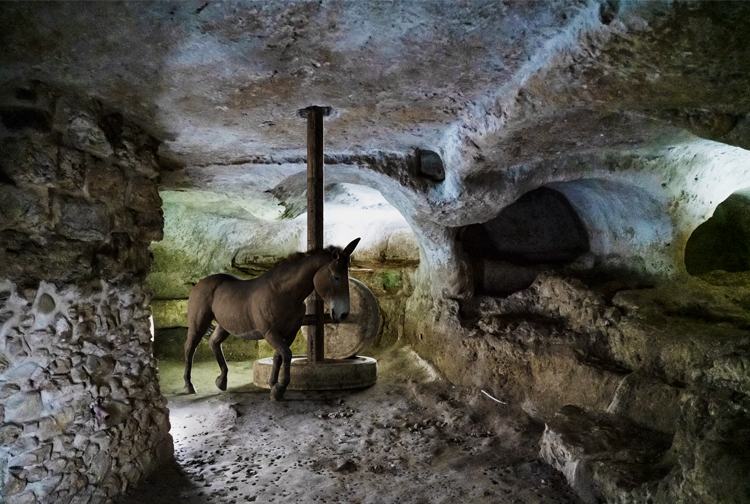The discovery in the southern sector of the catacomb of a large quantity of sugar jar fragments, three press stations and four molar stones testifies to the presence at the site of a Trappetum Cannamelarum: a cane sugar production industry that exploited some of the spaces of the now disused cemetery. Baron Nicola Abbate in 1373 started the production activity; his successors – barons, then princes of Carini, La Grua-Talamanca – invested in the sugar industry between the 14th and 17th centuries, until the final crisis of the sector caused by competition from American production. The territory of Carini boasted two factories: the trappitusupranu, near the castle, and the trappitusuttanu, between the Pyrainito and di Mezzo fiefdoms, in the middle of a large reed plantation, irrigated by the waterways that furrowed the plain and connected to the road system and the loader on the coast. In Carini, in fact, there was no market for sugar, which for its marketing had necessarily to reach the market in Palermo.
The trappitusuttanu coincides with the seventeenth – to twentieth-century rural complex – formerly Baglio Pilo – now divided between the Mandarano property, which incorporates a fifteenth-century tower, and the state-owned property located at No. 3 of Via Nazionale, seat of the museum, in whose courtyard opens the modern access to the southern sector of the catacomb. In the trappeto were carried out the operations of the mill, which had the function of defibrating and crushing the reeds, extracting their juice then collected in the tank below the press; then it was purified by cooking it in special copper boilers and finally cooled in earthenware vessels –forme and cantarelli– suitable for crystallization of sugar. The restitution of this system considers the space available in the three galleries II, III and V, each equipped with an animal-drawn crusher. Each station included a grinding wheel in an upright position, inserted in a horizontal wooden axle, about 2 meters long that was hooked to the vertical axis of rotation of the millstone, fixed to the ceiling by means of a dowel inserted in a quadrangular cavity in the vault. Two galleries also had masonry workbenches leaning against the now disused funerary structures.
